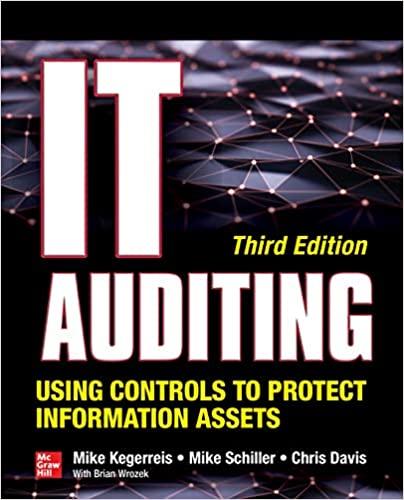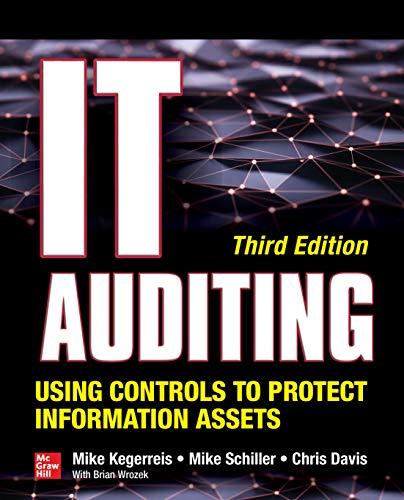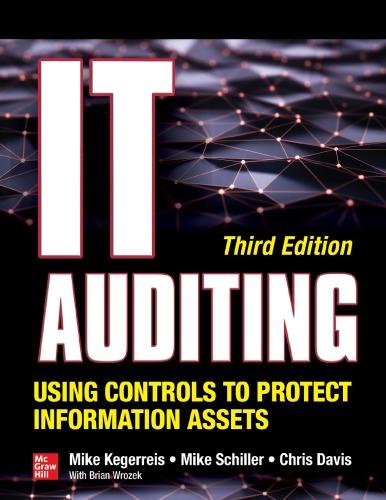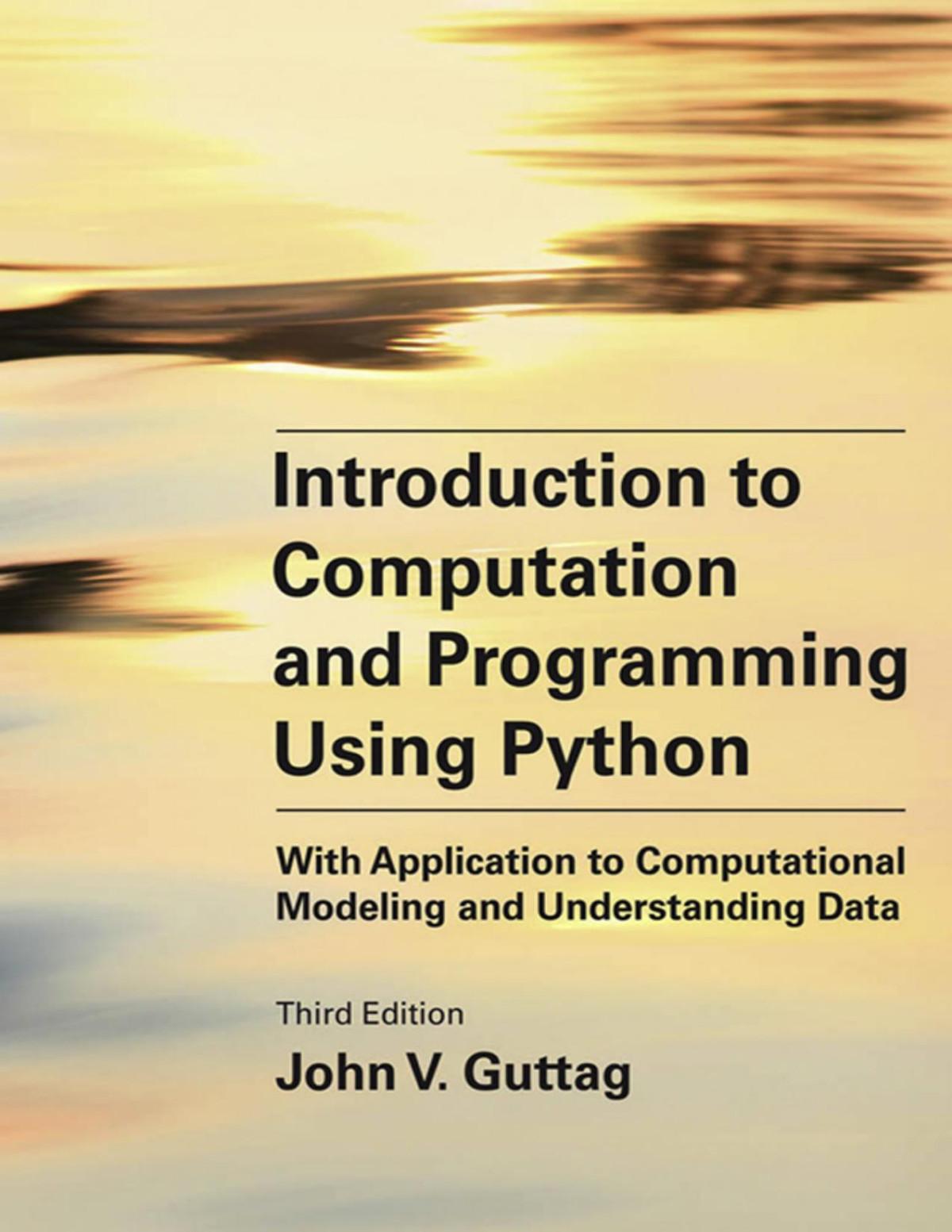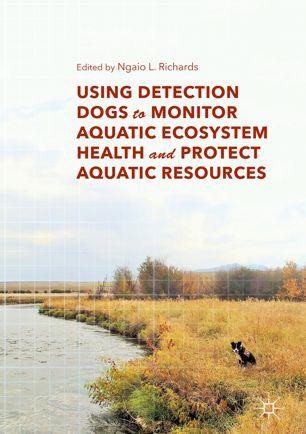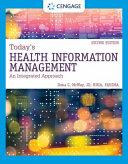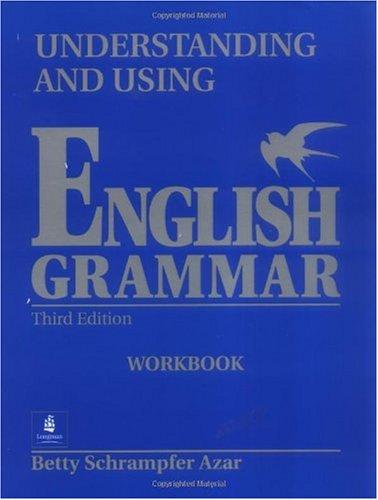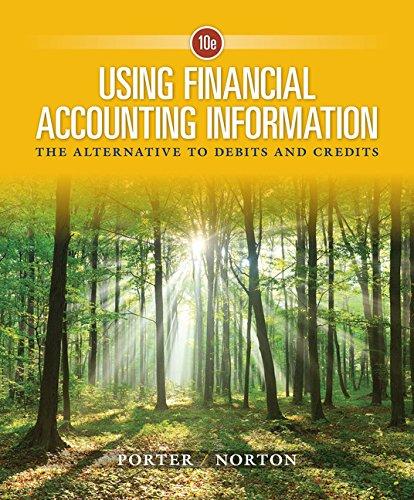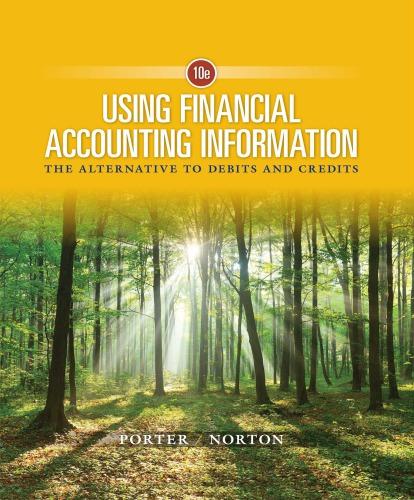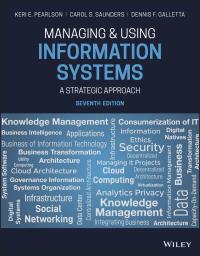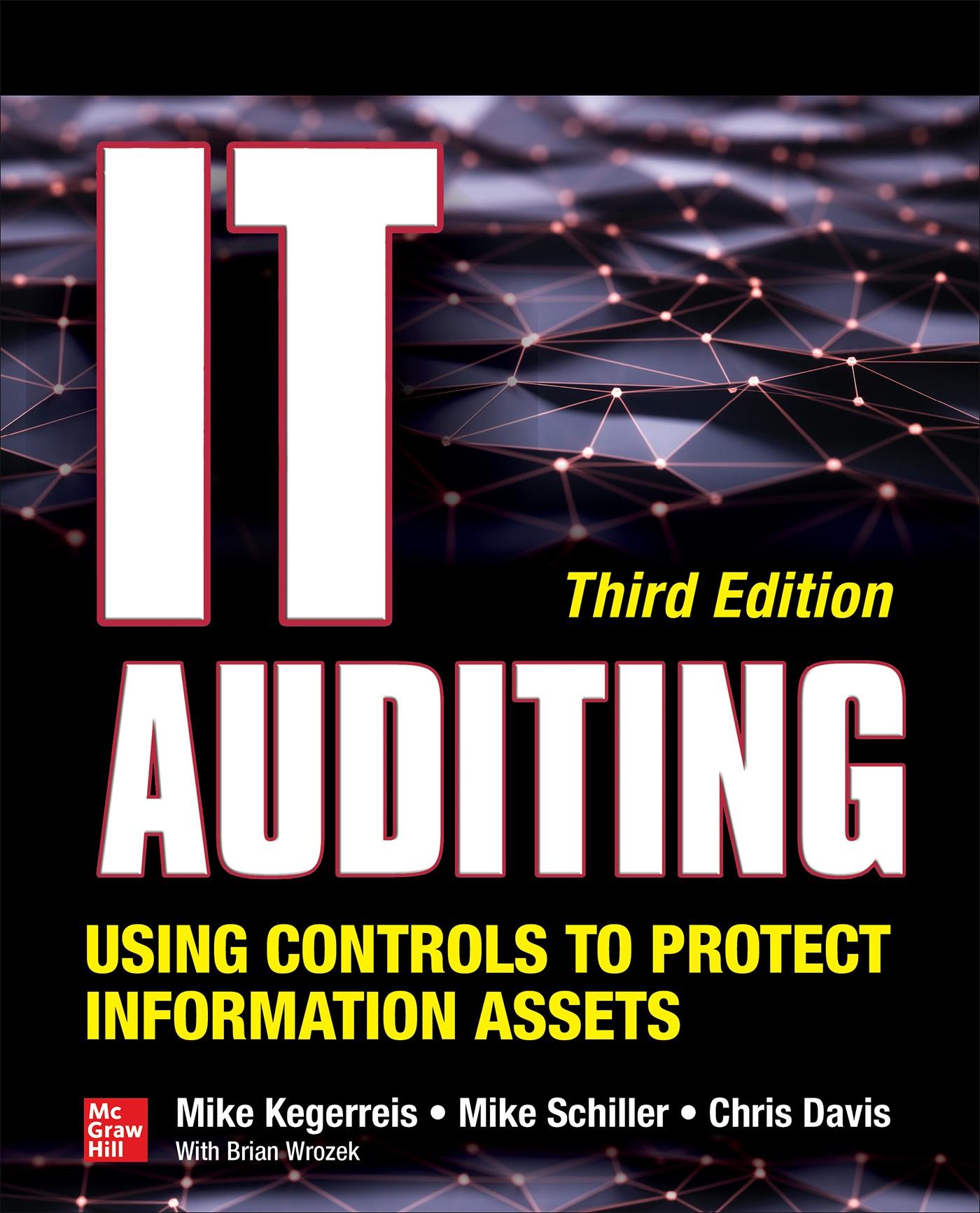ABOUT THE AUTHORS
Mike Kegerreis, CISSP, has over 20 years of experience in IT, including 11 as a security professional. Mike graduated from Texas A&M University and spent 12 years as a software developer before moving into information security. He has participated in SANS course and certification development; has spoken at venues such as InfoSec World, CAMP IT, the University of Texas at Dallas, and the Dallas IIA Super Conference; and in a prior life, developed human interfaces for oilfield systems in West Texas. A lifelong fan of golf, Mike also enjoys playing a round whenever he can, and his favorite course as of now is the TPC Las Vegas. Mike is currently the lead security architect at Texas Instruments.
Mike Schiller, CISA, is the chief information security officer at Texas Instruments and has more than 15 years of experience in the IT audit field, including as the IT audit director at Texas Instruments and Sabre. He has been a speaker at conferences such as CACS, InfoSec World, and ASUG (Americas’ SAP Users’ Group); an instructor of IT audit curriculum at Southern Methodist University; and part of the writing team for all three editions of IT Auditing: Using Controls to Protect
Information Assets. Mike graduated from Texas A&M University. He enjoys watching baseball in his spare time and has attended games in every Major League stadium. His baseball allegiance is to the Texas Rangers and Cincinnati Reds.
Chris Davis drives product and architecture strategy for customers building secure and compliant hybrid cloud infrastructures using Caveonix. He has trained and presented in information security, advanced computer forensic analysis, hardware security design, auditing, risk management, and certification curriculum for enterprise and governments worldwide. He has held positions at Oracle, Amazon, VMware, VCE, Critical Start, Accudata Systems, ForeScout Technologies, and Texas Instruments. Chris holds a bachelor’s degree in Nuclear Engineering Technologies from Thomas Edison and a master’s in business from the University of Texas at Austin. Chris has written and/or contributed to several books covering information security, forensics, and auditing, a few of which are Hacking Exposed: Computer Forensics (first and second editions), IT Auditing: Using Controls to Protect Information Assets (first and second editions), Anti-Hacker Toolkit (second and third editions), and The Computer Security Handbook (fifth and sixth editions).
About the Contributors
Brian Wrozek is a seasoned cybersecurity executive with 20+ years of experience in IT and information
security and management. As vice president of corporate security, risk and compliance management, and physical security at Optiv, Brian oversees all corporate security functions, including cyber operations, incident response, vulnerability management, and security governance activities. As an adjunct professor in the Satish and Yasmin Gupta College of Business at the University of Dallas, Brian teaches graduate-level cybersecurity courses. He is also a board member for the Texas CISO Council, an Information Sharing and Analysis Organization (ISAO).
Bobby E. Rogers is an information security engineer working as a contractor for Department of Defense agencies, helping to secure, certify, and accredit their information systems. His duties include information system security engineering, risk management, and certification and accreditation efforts. He retired after 21 years in the U.S. Air Force, serving as a network security engineer and instructor, and has secured networks all over the world. Bobby has a master’s degree in information assurance (IA) and is pursuing a doctoral degree in cybersecurity from Capitol Technology University in Maryland. His many certifications include CISSP-ISSEP, CEH, and MCSE: Security, as well as the CompTIA A+, Network+, Security+, and Mobility+ certifications.
Kevin Wheeler is an industry veteran with over 20 years of information security, IT audit, and compliance
experience. Kevin is the founder and managing director of InfoDefense, an information security solutions provider based in Plano, Texas. He has performed information security audits and assessments as well as network security design, computer incident response, business continuity planning, and IT security training for organizations in the financial services, healthcare, manufacturing, government, and IT services industries. Kevin’s project and employment portfolio includes organizations such as the U.S. Department of Defense, Bank of America, EDS (now DXC Technology), Symantec, and the state of Texas. He has also been an adjunct IT governance, risk, and compliance professor at Southern Methodist University and is a frequent speaker at information security and information technology audit conferences.
About the Technical Reviewers
Tim Breeding, CISA, CGEIT, currently has the privilege of serving as the IT audit manager at Centennial Bank, where he is responsible for building and leading the IT audit service to meet the present and future needs of the bank. Previously, Tim was blessed to lead IT audit at Walmart Stores, Inc., and Southwest Airlines. At both Walmart and Southwest Airlines, Tim presided over substantial growth of the IT audit functions. His responsibilities included full and complete oversight for all aspects of IT audit. This included managing project teams that assess information technology risks and
mitigation strategies from both an audit and consulting capacity. While at Walmart, Tim also spent several years as a senior director in the Walmart U.S. Program Management Office to promote effective program and project governance. In addition, Tim served more than 13 years in several IT capacities at Texas Instruments. His responsibilities included computer operations, software development, software quality assurance, and IT audit. Tim serves on the board of his local ISACA chapter and has 25 years in the IT audit, controls, and governance profession.
Michael Cox currently works as an information security analyst for Texas Instruments, where he has also worked as an IT auditor developing numerous audit programs and automated audit tools. Prior to this, he worked as a network engineer for Nortel, and he enjoys doing Linux sysadmin work whenever he can get it.
Michael has a bachelor of arts degree in history from Abilene Christian University and also served as a technical reviewer for the first two editions of this book.
Gregory Gordon has worked in the information technology industry for over 20 years with an extensive background and certifications in information systems security and auditing (CISSP and CISA) and has served on the IT security board of a global semiconductor design and manufacturing company. As an IT manager of a global B2B integration development and operations team, he is passionate about bringing creative solutions
to technical problems and developing people by helping them to take their next steps. Outside of the office, Greg enjoys all things soccer, traveling and experiencing different cultures, and relaxing with friends and family.
John Clark, CISSP, CISA, CISM, CIPP/E, CIPT, FIP, is an information security executive advisor to CISOs, CIOs, board rooms, and business executives. With over 20 years of experience in information technology and security, he has developed a passion for working with clients, large and small, to develop business-aligned information security and operational risk management programs. John has provided information security consulting and risk assessment services across a wide variety of industries, including financial services, gaming, healthcare, biotech, and telecommunications services. In his current role as executive director of oCISO Services at Optiv, he is part of a select team that assists clients in developing and executing information security program strategies and enabling effective information security program operation. Prior to joining Optiv, John held a variety of information security and risk management leadership positions at Andrews Kurth, American Express, and First National Bank of Arizona. In addition to multiple industry certifications, John has a bachelor’s degree in management information systems and an MBA from the University of Houston.
CONTENTS
Acknowledgments
Introduction
Part I Audit Overview
Chapter 1 Building an Effective Internal IT Audit Function
Why Are We Here? (The Internal Audit Department’s Mission)
Independence: The Great Myth
Adding Value Outside of Formal Audits
Business Advisory Audits
Four Methods for Business Advisory Audits
Early Involvement
Informal Audits
Knowledge Sharing
Self-Assessments
Continuous Auditing
Final Thoughts on Adding Value Outside of Formal Audits
Relationship Building: Partnering vs. Policing
Learning to Build Partnerships
The Role of the IT Audit Team
Application Auditors (or Integrated Auditors)
Data Extraction and Analysis
Specialists
IT Auditors
Forming and Maintaining an Effective IT Audit Team
Career IT Auditors
IT Professionals
Career IT Auditors vs. IT
Professionals: Final Thoughts
Co-sourcing
Maintaining Expertise
Sources of Learning
Relationship with External Auditors and Internal Assurance Functions
Summary
Chapter 2 The Audit Process
Internal Controls
Types of Internal Controls
Internal Control Examples
Determining What to Audit
Creating the Audit Universe
Ranking the Audit Universe
Determining What to Audit: Final
Part II
Chapter 3
Thoughts
The Stages of an Audit
Planning
Fieldwork and Documentation
Issue Discovery and Validation
Solution Development
Report Drafting and Issuance
Issue Tracking
Standards
Summary
Auditing Techniques
Auditing Entity-Level Controls
Background
Test Steps for Auditing Entity-Level Controls
Knowledge Base
Master Checklist
Chapter 4 Auditing Cybersecurity Programs
Background
Steps for Auditing Cybersecurity Programs
Knowledge Base
Master Checklist
Chapter 5 Auditing Data Centers and Disaster
Recovery
Background
Chapter 6
Data Center Auditing Essentials
Physical Security and Environmental Controls
System and Site Resiliency
Data Center Operations
Disaster Preparedness
Test Steps for Auditing Data Centers
Neighborhood and External Risk Factors
Physical Access Controls
Environmental Controls
Power and Electricity
Fire Suppression
Data Center Operations
System Resiliency
Data Backup and Restoration
Disaster Recovery Planning
Knowledge Base
Master Checklists
Auditing Networking Devices
Background
Network Auditing Essentials
Protocols
OSI Model
Routers and Switches
LANs, VLANs, WANs, and WLANs
Firewalls
Auditing Switches, Routers, and Firewalls
General Network Equipment Audit
Steps
Additional Switch Controls: Layer 2
Additional Router Controls: Layer 3
Additional Firewall Controls
Additional Controls for Wireless
Network Gear
Tools and Technology
Knowledge Base
Master Checklists
Chapter 7 Auditing Windows Servers
Background
Windows Auditing Essentials
Command-Line Tips
Essential Command-Line Tools
Common Commands
Server Administration Tools
Performing the Audit
Test Steps for Auditing Windows
Initial Steps
Account Management
Permissions Management
Network Security and Controls
Security Monitoring and Other
General Controls
Tools and Technology
Chapter 8
Knowledge Base
Master Checklist
Auditing Unix and Linux Operating
Systems
Background
Unix and Linux Auditing Essentials
Key Concepts
File System Layout and Navigation
File System Permissions
Users and Authentication
Network Services
Test Steps for Auditing Unix and Linux
Account Management
Permissions Management
Network Security and Controls
Security Monitoring and Other
General Controls
Tools and Technology
Network Vulnerability Scanners
NMAP
Malware Detection Tools
Tools for Validating Password
Strength
Host-Based Vulnerability Scanners
Shell/Awk/etc
Knowledge Base
Master Checklists
Chapter 9 Auditing Web Servers and Web Applications
Background
Web Auditing Essentials
One Audit with Multiple Components
Part 1: Test Steps for Auditing the Host Operating System
Part 2: Test Steps for Auditing Web Servers
Part 3: Test Steps for Auditing Web Applications
Additional Steps for Auditing Web Applications
Tools and Technology
Knowledge Base
Master Checklists
Chapter 10 Auditing Databases
Background
Database Auditing Essentials
Common Database Vendors
Database Components
NoSQL Database Systems
Test Steps for Auditing Databases
Initial Steps
Operating System Security
Account Management
Permissions Management
Data Encryption
Security Log Monitoring and Management
Tools and Technology
Auditing Tools
Monitoring Tools
Encryption Tools
Knowledge Base
Master Checklist
Chapter 11 Auditing Big Data and Data Repositories
Background
Big Data and Data Repository Auditing Essentials
Test Steps for Auditing Big Data and Data Repositories
Knowledge Base
Master Checklist
Chapter 12 Auditing Storage
Background
Storage Auditing Essentials
Key Storage Components
Key Storage Concepts
Test Steps for Auditing Storage
Initial Steps
Account Management
Storage Management
Encryption and Permissions
Management
Security Monitoring and Other
General Controls
Knowledge Base
Master Checklists
Chapter 13 Auditing Virtualized Environments
Background
Commercial and Open-Source Projects
Virtualization Auditing Essentials
Test Steps for Auditing Virtualization
Initial Steps
Account Management and Resource
Provisioning/Deprovisioning
Virtual Environment Management
Security Monitoring and Additional
Security Controls
Knowledge Base
Hypervisors
Tools
Master Checklists
Chapter 14 Auditing End-User Computing Devices
Background
Part 1: Auditing Windows and Mac Client Systems
Windows and Mac Auditing Essentials
Test Steps for Auditing Windows and Mac Client Systems
Tools and Technology
Knowledge Base
Part 2: Auditing Mobile Devices
Mobile Device Auditing Essentials
Test Steps for Auditing Mobile Devices
Additional Considerations
Tools and Technology
Knowledge Base
Master Checklists
Chapter 15 Auditing Applications
Background
Application Auditing Essentials
Test Steps for Auditing Applications
Input Controls
Interface Controls
Audit Trails and Security Monitoring
Account Management
Permissions Management
Software Change Controls
Backup and Recovery
Data Retention and Classification and
User Involvement
Operating System, Database, and
Other Infrastructure Controls
Master Checklists
Chapter 16 Auditing Cloud Computing and Outsourced Operations
Background
Cloud Computing and Outsourced
Operations Auditing Essentials
IT Systems, Software, and
Infrastructure Outsourcing
IT Service Outsourcing
Other Considerations for IT Service
Outsourcing
Third-Party Reports and Certifications
Test Steps for Auditing Cloud Computing and Outsourced Operations
Initial Steps
Vendor Selection and Contracts
Account Management and Data
Security
Operations and Governance
Legal Concerns and Regulatory
Compliance
Tools and Technology
Knowledge Base
Master Checklist
Chapter 17 Auditing Company Projects
Background
Project Auditing Essentials
High-Level Goals of a Project Audit
Basic Approaches to Project Auditing
Waterfall and Agile Software
Development Methodologies
Seven Major Parts of a Project Audit
Test Steps for Auditing Company Projects
Overall Project Management
Project Startup, Requirements
Gathering, and Initial Design
Detailed Design and System
Development
Testing
Implementation
Training
Project Wrap-Up
Knowledge Base
Master Checklists
Chapter 18 Auditing New/Other Technologies
Background
New/Other Technology Auditing Essentials
Generalized Frameworks
Best Practices
Test Steps for Auditing New and Other
Technologies
Initial Steps
Account Management
Permissions Management
Network Security and Controls
Security Monitoring and Other
General Controls
Master Checklists
Part III Frameworks, Standards, Regulations, and Risk Management
Chapter 19 Frameworks and Standards
Introduction to Internal IT Controls, Frameworks, and Standards
COSO
COSO Definition of Internal Control
Key Concepts of Internal Control
Internal Control–Integrated Framework
Enterprise Risk Management–Integrated Framework
Relationship Between Internal Control and Enterprise Risk Management
Publications
IT Governance
IT Governance Maturity Model
COBIT
ITIL
ITIL Concepts
ISO 27001
ISO 27001 Concepts
NIST Cyber Security Framework
NSA INFOSEC Assessment Methodology
NSA INFOSEC Assessment
Methodology Concepts
Pre-assessment Phase
Onsite Activities Phase
Post-assessment Phase
Frameworks and Standards Trends
Knowledge Base
Chapter 20 Regulations
An Introduction to Legislation Related to Internal Controls
Regulatory Impact on IT Audits
History of Corporate Financial Regulation
The Sarbanes-Oxley Act of 2002
SOX’s Impact on Public Corporations
Core Points of the SOX Act
SOX’s Impact on IT Departments
SOX Considerations for Companies with Multiple Locations
Impact of Third-Party Services on SOX Compliance
Specific IT Controls Required for SOX Compliance
The Financial Impact of SOX Compliance on Companies
Gramm-Leach-Bliley Act
GLBA Requirements
Federal Financial Institutions
Examination Council
General Data Protection Regulation
Additional Privacy Regulations
California Security Breach Information Act (SB 1386)
California Consumer Privacy Act
Canadian Personal Information
Protection and Electronic Documentation Act
Privacy Law Trends
Health Insurance Portability and Accountability Act
HIPAA Privacy and Security Rules
The HITECH Act
HIPAA’s Impact on Covered Entities
EU Commission and Basel II
Basel II Capital Accord
Payment Card Industry Data Security Standard
PCI Impact on the Payment Card Industry
Other Regulatory Trends
Knowledge Base
Chapter 21 Risk Management
Benefits of Risk Management
Risk Management from an Executive
Perspective
Quantitative vs. Qualitative Risk
Analysis
Quantitative Risk Analysis
Elements of Risk
Practical Application
Addressing Risk
Common Causes for Inaccuracies
Quantitative Risk Analysis in Practice
Qualitative Risk Analysis
IT Risk Management Life Cycle
Phase 1: Identify Information Assets
Phase 2: Quantify and Qualify Threats
Phase 3: Assess Vulnerabilities
Phase 4: Remediate Control Gaps
Phase 5: Manage Residual Risk
Third-Party Risk
Risk Identification
Risk Assessment
Remediation
Monitoring and Reporting
Summary of Formulas
Knowledge Base
Index
ACKNOWLEDGMENTS
We simply could not have done this without the help of many, many people. It was an amazing challenge coordinating the necessary depth of corporate, legal, and technical expertise across so many subjects. Many old and new friends; organizations such as ISACA, NIST, and OWASP; and many others donated knowledge, time, techniques, tools, and much more to make this project a success.
Writing this book required tireless hours of writing, research, and corroboration among the authors, contributing authors, technical editors, industry peers, copy editors, layout team, and publisher leadership team while our loved ones took the brunt of our efforts. It is only appropriate that we thank and acknowledge those who supported and carried us despite ourselves. We are truly grateful to each of you.
The wonderful and overworked team at McGraw-Hill is simply outstanding. We sincerely appreciate your dedication, coaching, and long hours during the course of this project. Wendy Rinaldi, thank you for your excellent leadership, coordination, and guidance to bring this project to fruition. Your willingness to step in and
provide solutions when we hit snags was impressive and appreciated. We would also like to extend a big round of thanks to Claire Yee, our acquisitions coordinator, for her coordination and work with the technical editors. Thank you so much for being a part of this. We also would like to thank the wonderful efforts of the project editor, Rachel Fogelberg; copy editor, Lisa McCoy; proofreader, Paul Tyler; indexer, Ted Laux; editorial supervisor, Patty Mon; production supervisor, Lynn Messina; and compositor and illustrator, Cenveo Publisher Services.
A special thank you goes to Brian Wrozek and Bobby Rogers for coming on board at the eleventh hour and helping to fill in some critical gaps. Your involvement was valuable and truly made a difference. And thank you to Tim Breeding, Michael Cox, Greg Gordon, and John Clark for their deep technical reviews for the third edition. Your reviews were wonderful, detailed, and significant in providing a useful product for the readers. Thank you also to Kevin Wheeler for your contributions.
We also want to acknowledge and extend our thanks to the many people who were involved with editing, reviewing, and publishing the first two editions. Without your work on the first two editions, there would be no third edition. Thank you to the contributing authors for the first two editions: Stacey Hamaker and Aaron Newman. Thank you to our previous technical reviewers: Barbara Anderson, Mike Curry, Subesh Ghose, Keith Loyd (we miss you, Keith), and Vishal Mehra. And thank
you to the fine folks at McGraw-Hill who played critical roles in the first two editions. First edition: Jane Brownlow, Jennifer Housh, Madhu Bhardwaj, Jim Madru, Ragini Pandey, Kevin Broccoli, Janet Walden, George Anderson, and Jeff Weeks. Second edition: Megg Morin, Joya Anthony, LeeAnn Pickrell, Lisa Theobald, Martin Benes, Karin Arrigoni, Jody McKenzie, James Kussow, Jeff Weeks, and Lyssa Wald.
We are truly grateful to three organizations that allowed us to borrow content. We would like to thank the people at ISACA for bringing a cohesive knowledge set to the auditing field and the CISA certification. There is still much work to be done, and we as a team would like to encourage our peers to contribute to this wonderful knowledge base. Likewise, thank you Jeff Williams and Mark Curphey for founding and contributing to OWASP. Your selfless investments are helping thousands of professionals worldwide and many more who would never know where to start securing their websites. Thank you. And thank you to NIST for adding much-needed guidance and standards to the world of cybersecurity.
Finally, thank you to everyone who bought, read, used, and supported the first two editions of this book. We have been extremely honored and humbled by the response we received to the earlier editions and inspired to improve on our work with this third edition.
Mike, Mike, and Chris
Thank you to Mike Schiller for considering me for this project and taking a risk on me as a new author. Your
confidence in me and support during this effort and for my career in general have been terrific, and I’ve been honored to work with you.
A big thanks to Greg Gordon for his technical review of my work, and thanks to all of the other technical reviewers who helped make this happen.
Thanks to Brian Wrozek for jumping into this project late in the game and for opening that door for me into the security field almost 12 years ago. I’m thankful for your guidance and influence over the years.
Thank you to all of the auditors, security practitioners, software developers, businesses, and others who share what you ’ ve learned in books, papers, magazines, conferences, forums, blogs, and more. A book like this isn’t a compilation of things we as authors just “know” we don’t sit down and just start cranking out complete chapters from memory or experience. A lot of this is the result of research and learning from other people, and I couldn’t have written any of these chapters without your help. You make the rest of us better by sharing what you know; if you learn something useful from this book, please help the folks around you and pass it on.
To my friend Billy Rodgers thank you for your priceless expression after seeing the second edition of this book on my counter, saying something about it sounding like a real page-turner, and then hearing that I was working on the third edition. Thanks for keeping me grounded, for helping me remember that this is not really Pulitzer-type stuff, and for being such a terrific
Christian role model for me and my family.
And most of all, thanks to my family for your incredible love and support. Thanks to Kristy, for putting up with a cardboard desk so I could work on this project while we were moving and, of course, for considering this book for a future book club selection. Thanks to Leah, Brian, and Caroline for your understanding as I disappeared, was distracted, or delayed vacations or events so I could meet a deadline. Is it break time?
Mike Kegerreis
Thanks to Mike Kegerreis for agreeing to come on board for this project and for doing the lion’s share of the heavy lifting. This edition wouldn’t have happened without your involvement. You’re clearly the MVP of this edition, and I’m constantly amazed by your skills as a security professional.
I would like to thank my good friend Tim Breeding for somehow making the time to be the technical reviewer for most of my chapters. You’re an amazing audit professional, and your audit expertise and quality review comments made a difference. Thanks to Michael Cox, the Cal Ripken, Jr. of technical reviewers on this book, for agreeing to review the Unix chapter for a recordbreaking third straight edition. And thanks to Greg Gordon for agreeing to provide the technical review for my unassigned chapter.
I would also like to thank Chris Davis for his friendship and partnership through the years.
